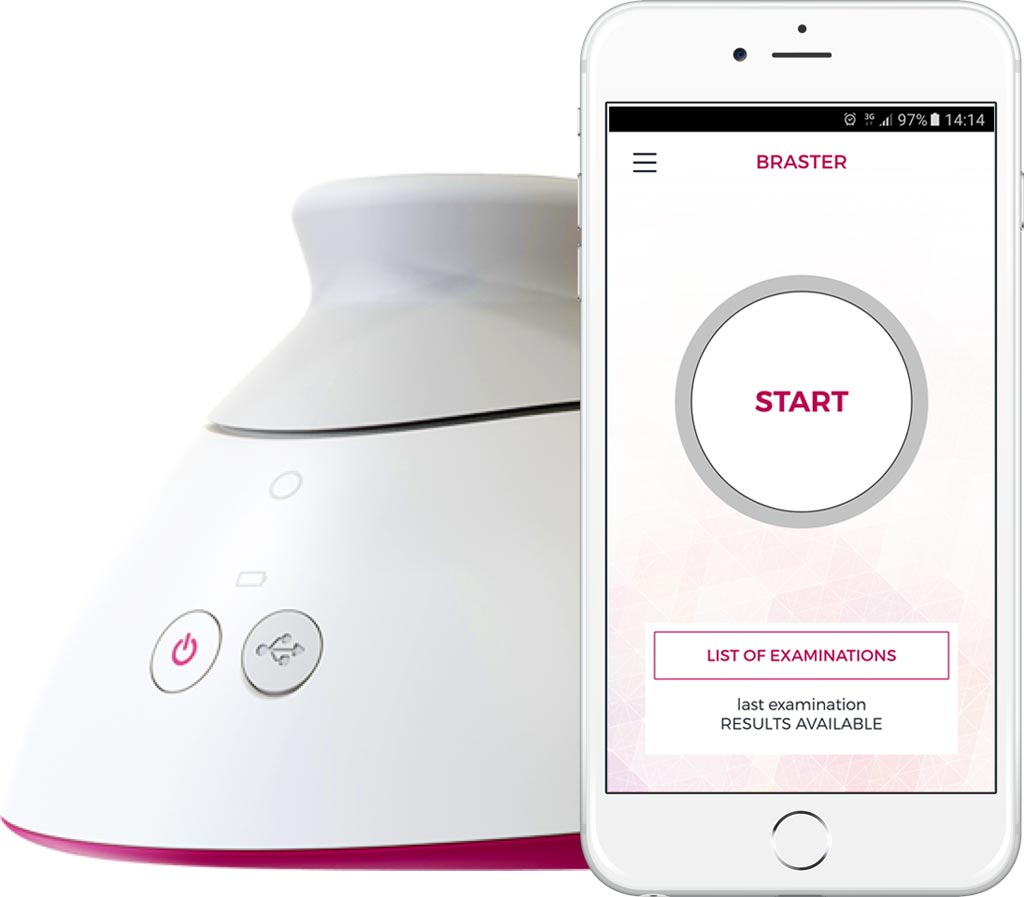Self–Exam Device Helps Detect Breast Cancer
By MedImaging International staff writers
Posted on 25 Apr 2018
An innovative medical thermographic testing device detects breast cancer by imaging and recording temperature distribution in the breasts.Posted on 25 Apr 2018
The Braster System (Braster; Warsaw, Poland) is based on a thermographic matrix made of liquid crystals that can monitor the distribution of temperature in the breasts, recording areas with increased temperature, which may indicate malignant changes. The liquid crystal matrices, when applied to the breast surface, show red, green, and blue color images that represent temperature distribution. To simplify the self-examination process, a mobile application guides users through the screening steps and allows them to view their results.

Image: The Braster system and accompanying app (Photo courtesy of Braster).
The thermal images are also sent online to the Braster telemedical center, where they are interpreted with the aid of specialized algorithms. Detailed analysis of the temperature distribution can determine if neoplastic lesions have formed in the examined breast by assessing the thermal balance between the right and left breasts, and by comparing the current image with images from previous examinations. The results are verified by radiologists as part of quality control. If users have any doubts, qualified experts are available to answer questions and provide advice.
“Our mission is to fight for a future where women of any age will be able to detect breast cancer at an early stage to increase their chances for less invasive treatment and faster recovery,” stated the company. “To this end, we want to offer all women around the world a possibility to perform an in-home, monthly, non-invasive, and reliable breast examination on their own, in between the regular examinations ordered by the doctor.”
A study conducted in 2013 studied device parameters for women aged 18 years and older, determining that the thermographic matrix technology has a sensitivity of 72% and specificity of 58%, compared to standard methods of breast pathology detection. When combining thermographic examination and mammography, sensitivity rose to 96%. The study also proved that thermography, mammography, and ultrasonography complement one another, providing an opportunity for further development of various methods for breast pathology diagnostics.
Related Links:
Braster














